Oklahoma's 3rd congressional district
Oklahoma's 3rd congressional district is the largest congressional district in the state, covering an area of 34,088.49 square miles, over 48 percent the state's land mass. The district is bordered by New Mexico, Colorado, Kansas, and the Texas panhandle. Altogether, the district includes (in whole or in part) a total of 32 counties, and covers more territory than the state's other four districts combined. It is one of the largest districts in the nation that does not cover an entire state.
| Oklahoma's 3rd congressional district | |||
|---|---|---|---|
.tif.png) Oklahoma's 3rd congressional district - since January 3, 2013. | |||
| Representative |
| ||
| Distribution |
| ||
| Population (2000) | 690,131 | ||
| Median income | $50,089[1] | ||
| Ethnicity |
| ||
| Cook PVI | R+27[2] | ||
The district has been represented by Republican Frank Lucas since 2003.
Prior to 2003, most of the territory now in the 3rd district was in the 6th district. Meanwhile, from 1915 to 2003, the 3rd district was located in southeastern Oklahoma, an area known as Little Dixie. It had a dramatically different voting history from the current 3rd; only one Republican ever won it. It was the district of Carl Albert, Speaker of the House from 1971 to 1977.
Geography
The district borders New Mexico to the west, Colorado and Kansas to the north, and the Texas panhandle to the south. To the far west, the district includes the three counties of the Oklahoma Panhandle (Cimarron, Texas, Beaver), and also Harper, Ellis, Woodward, Woods, Major, Alfalfa, Grant, Garfield, Kay, Noble, Osage, Pawnee, Creek, Payne, Lincoln, Logan, Kingfisher, Blaine, Canadian, Dewey, Custer, Rogers Mills, Beckham, Washita, Caddo, Kiowa, Greer, Harmon, and Jackson.
Some of the principal cities in the district include Guymon, Ponca City, Cheyenne, Enid, Stillwater, Yukon, Guthrie, Sapulpa and Altus. It also includes slivers of Oklahoma City and Tulsa.
Demographics
Half of the district's inhabitants are urban and 3 percent of adults working in the district use public transportation, ride a bike, or walk.[3] The district's population is 5 percent Latino and 3 percent foreign-born.[3]
Results from recent statewide elections
| Year | Office | Results |
|---|---|---|
| 2000 | President | Bush 66% - 34% |
| 2004 | President | Bush 72% - 28% |
| 2008 | President | McCain 73% - 27% |
| 2012 | President | Romney 74% - 26% |
| 2016 | President | Trump 74% - 21% |
Politics
The political success of the Republican party in the region is tied to the state's settlement patterns. Northwest Oklahoma was settled out of Kansas while southeast was settled by Southerners that brought with them Democratic traditions.[4]
The Great Depression hurt the GOP,[4] but it has since regained its place in the state, and the growing social conservative bent in the state has allowed it to overtake the Democrats. It is now one of the most Republican districts in the nation.
George W. Bush received 72 percent of the district's vote in 2004.
List of members representing the district
| Name | Party | Years | Cong ess |
Electoral history |
|---|---|---|---|---|
| District created | November 16, 1907 | |||
.jpg) James S. Davenport |
Democratic | November 16, 1907 – March 3, 1909 |
60th | Elected in 1907. Lost re-election. |
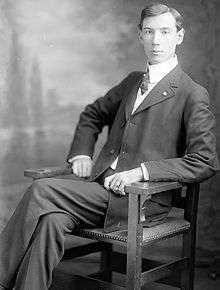 Charles E. Creager |
Republican | March 4, 1909 – March 3, 1911 |
61st | Elected in 1908. Lost re-election. |
.jpg) James S. Davenport |
Democratic | March 4, 1911 – March 3, 1915 |
62nd 63rd |
Elected in 1910. Re-elected in 1912. Redistricted to the 1st district. |
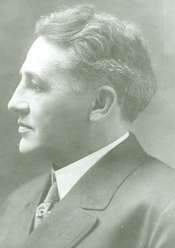 Charles D. Carter |
Democratic | March 4, 1915 – March 3, 1927 |
64th 65th 66th 67th 68th 69th |
Redistricted from the 4th district. Re-elected in 1916. Re-elected in 1918. Re-elected in 1920. Re-elected in 1922. Re-elected in 1924. Lost renomination. |
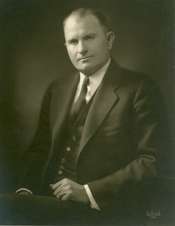 Wilburn Cartwright |
Democratic | March 4, 1927 – January 3, 1943 |
70th 71st 72nd 73rd 74th 75th 76th 77th |
Elected in 1926. Re-elected in 1928. Re-elected in 1930. Re-elected in 1932. Re-elected in 1934. Re-elected in 1936. Re-elected in 1938. Re-elected in 1940. Lost renomination. |
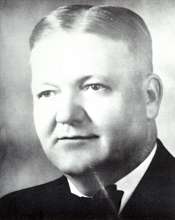 Paul Stewart |
Democratic | January 3, 1943 – January 3, 1947 |
78th 79th |
Elected in 1942. Re-elected in 1944. Retired. |
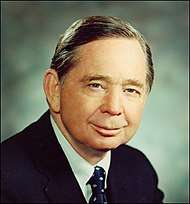 Carl Albert |
Democratic | January 3, 1947 – January 3, 1977 |
80th 81st 82nd 83rd 84th 85th 86th 87th 88th 89th 90th 91st 92nd 93rd 94th |
Elected in 1946. Re-elected in 1948. Re-elected in 1950. Re-elected in 1952. Re-elected in 1954. Re-elected in 1956. Re-elected in 1958. Re-elected in 1960. Re-elected in 1962. Re-elected in 1964. Re-elected in 1966. Re-elected in 1968. Re-elected in 1970. Re-elected in 1972. Re-elected in 1974. Retired. |
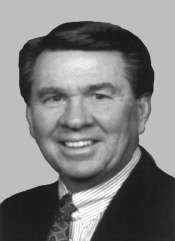 Wes Watkins |
Democratic | January 3, 1977 – January 3, 1991 |
95th 96th 97th 98th 99th 100th 101st |
Elected in 1976. Re-elected in 1978. Re-elected in 1980. Re-elected in 1982. Re-elected in 1984. Re-elected in 1986. Re-elected in 1988. Retired to run for Oklahoma Governor. |
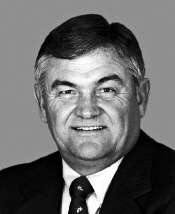 Bill Brewster |
Democratic | January 3, 1991 – January 3, 1997 |
102nd 103rd 104th |
Elected in 1990. Re-elected in 1992. Re-elected in 1994. Retired. |
 Wes Watkins |
Republican | January 3, 1997 – January 3, 2003 |
105th 106th 107th |
Elected again in 1996. Re-elected in 1998. Re-elected in 2000. Retired. |
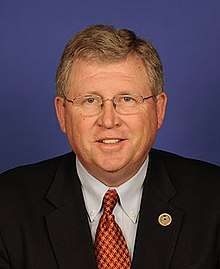 Frank Lucas |
Republican | January 3, 2003 – present |
108th 109th 110th 111th 112th 113th 114th 115th 116th |
Redistricted from the 6th district. Re-elected in 2004. Re-elected in 2006. Re-elected in 2008. Re-elected in 2010. Re-elected in 2012. Re-elected in 2014. Re-elected in 2016. Re-elected in 2018. |
Historical district boundaries
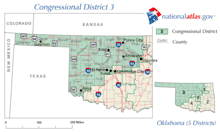
References
- https://www.census.gov/mycd/?st=40&cd=03
- "Partisan Voting Index – Districts of the 115th Congress" (PDF). The Cook Political Report. April 7, 2017. Retrieved April 7, 2017.
- Representative Frank Lucas, That's My Congress (accessed June 1, 2010).
- Gaddie, Ronald Keith. Republican Party Archived 2011-09-03 at the Wayback Machine, Encyclopedia of Oklahoma History and Culture (accessed February 11, 2010).
- Martis, Kenneth C. (1989). The Historical Atlas of Political Parties in the United States Congress. New York: Macmillan Publishing Company.
- Martis, Kenneth C. (1982). The Historical Atlas of United States Congressional Districts. New York: Macmillan Publishing Company.
- Congressional Biographical Directory of the United States 1774–present
| U.S. House of Representatives | ||
|---|---|---|
| Preceded by Massachusetts's 9th congressional district |
Home district of the Speaker January 21, 1971 – January 3, 1977 |
Succeeded by Massachusetts's 8th congressional district |